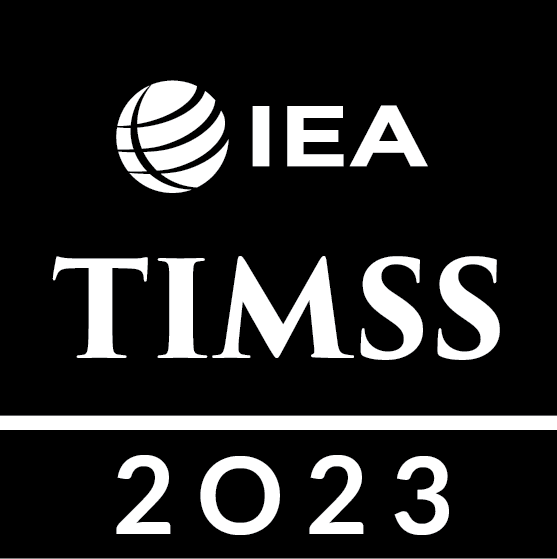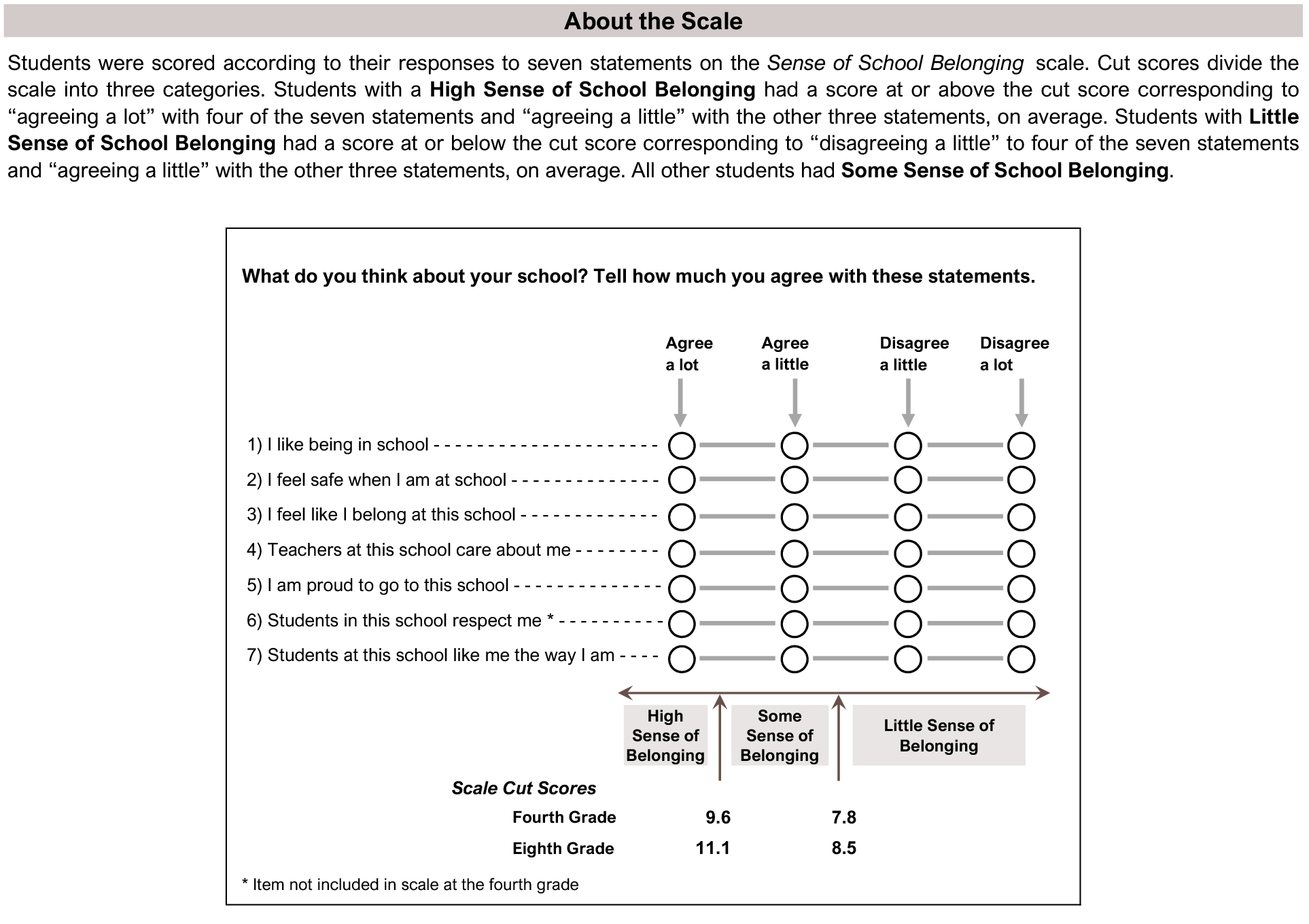Students’ Sense of School Belonging
Student Experiences and Attitudes
Students’ Sense of School Belonging
Fourth- and eighth-grade students with a greater sense of school belonging have higher average mathematics and science achievement internationally than those who feel less connected at school. The items in the TIMSS 2023 Sense of School Belonging scale (Exhibit 6.1.1) asked students about different aspects of school belonging, such as their own feelings about school and their relationships with others at school. Based on their responses, students were classified as having a “high” sense of belonging, “some” sense of belonging, or “little” sense of belonging.
On average internationally, the majority of fourth-grade students were classified as having a “high” sense of belonging or “some” sense of belonging (57% and 30%, respectively). A small percentage of students (12% on average) were classified as having “little” sense of belonging. There is quite a bit of variation in the distribution of students in these categories across countries, notably observed for the percentages of students classified as having “high” and “some” sense of belonging. The differences in average achievement between students with “high” and “some” sense of belonging are small for both subjects (see Exhibits 6.1.2 and 6.1.3). In the fourth grade, students with a “high” sense of belonging have the highest achievement (511 for mathematics and 502 for science), while those with “some” sense of belonging had a slightly lower average achievement (502 in mathematics and 493 in science). In contrast, fourth-grade students with “little” sense of belonging showed a larger difference from the other groups and had the lowest average achievement (486 in mathematics and 478 in science).
Thirty percent of eighth-grade students internationally were classified as having a “high” sense of belonging, 49 percent were classified as having “some” sense of belonging, and 21 percent were classified as having “little” sense of belonging, on average. The relationship between sense of school belonging and average achievement is positive (see Exhibits 6.1.4 and 6.1.5): students with “high” sense of belonging have the highest average achievement (484 in mathematics and 480 in science), followed by those with “some” sense of belonging (478 in mathematics and 477 in science) and those with “little” sense of belonging (461 in mathematics and 463 in science).
Read More
Students’ Sense of School Belonging
High Sense of Belonging
Some Sense of Belonging
Little Sense of Belonging
This TIMSS context questionnaire scale was established in 2023 based on the combined response distribution of countries that participated in TIMSS 2023. To provide a point of reference for country comparisons, the scale centerpoint of 10 was located at the mean of the combined distribution. The units of the scale were chosen so that 2 scale score points corresponded to the standard deviation of the distribution.
( ) Standard errors appear in parentheses. Because of rounding some results may appear inconsistent.
An “r” indicates data are available for at least 70% but less than 85% of the students.
A tilde (~) indicates insufficient data to report result.
Scroll Up

